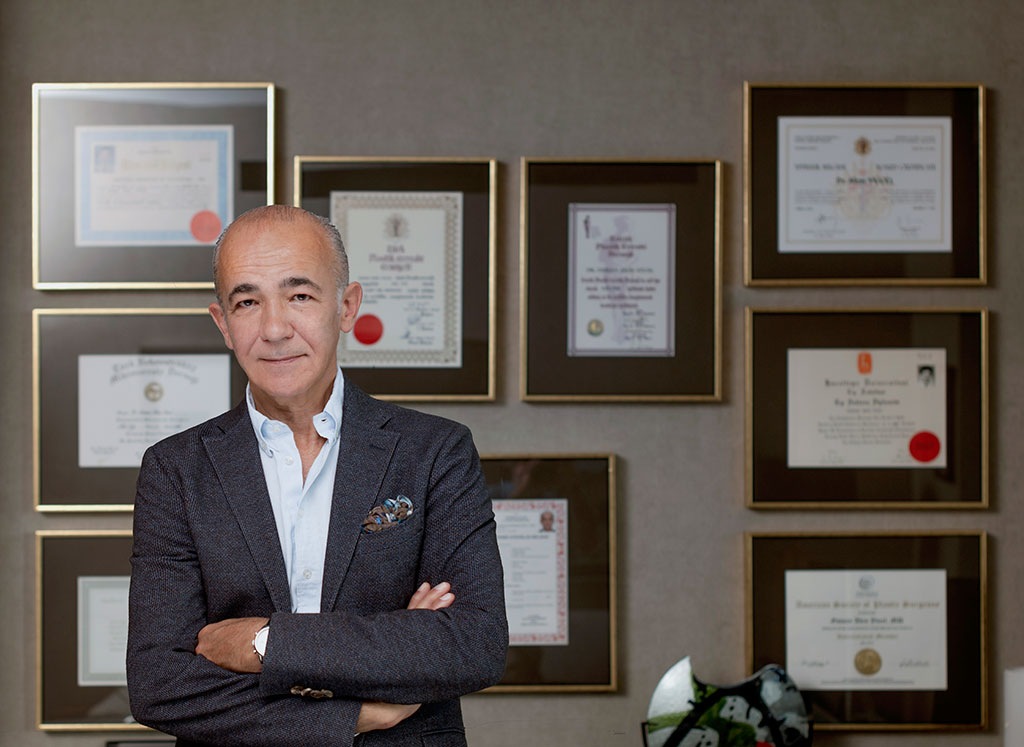One in 20 children has protruding ears. It may be cute in a little child, but for school-age children, the teasing can cause serious psychological trauma. We, therefore, recommend the correction of ear anomalies at an early age.
Frequently asked questions about aesthetic ear surgery:
What are the main anomalies in ear development?
Three anatomical anomalies are distinguished:
- Protruding ears
- Large ears
- Abnormally shaped ears.
The extent of these three anomalies varies. Plastic surgery is a method to correct them.
How frequent are anatomical anomalies of the ear?
Five per cent of all children are affected. The reason can be hereditary; also some anomalies are more frequent in certain ethnical groups than in others. There is no gender-specific difference. On the other hand, it is easier for girls to hide protruding ears under long hair.
Who is a good candidate for ear correction?
When the shape of the ears becomes a problem for a child (teasing, social isolation), surgery should be considered. A psychologist may also be consulted.
Can protruding ears be corrected with surgery?
In the first 3 months after birth, the ear cartilage is still soft and malleable. At this age a bandage around the ears may suffice. At a later stage, it is no longer that easy.
What is a suitable age for aesthetic ear surgery?
At the age of 3 year, the ear has reached 85% of its final size. The ideal age is between 4-6 years of age. To avoid teasing at school, surgery should be performed before enrolment.
How is the procedure performed?
There are many ear correction methods. I prefer an incision behind the ear, after which some of the cartilage is carefully scraped off with a special tool. This reduction allows the ear to be positioned closer to the head. The incision is sutured to stabilize and fix the result.
This intervention behind the ear leaves no visible traces of the operation, the cartilage is not cut, and no skin is removed. Swelling after surgery is moderate and the result is permanent.
What to do and what not to do before treatment?
Three weeks before an invasive / surgical treatment patient must stop smoking and taking aspirin. In the last week, patients must stop taking any anticoagulant (“blood-thinning”) medicine.
The following substances are also prohibited:
- pain killers such as Apranax, Voltaren and Vermidon (alternative brand names are Minoset and Novalgin)
- multivitamin tablets containing ginseng, ginkgo biloba and coenzyme Q,
- green tea, herbal products containing linseed, sour cherry stalks, tomato seeds
- all diet products.
Does the procedure require anaesthesia?
Small children are operated on under general anaesthesia; for elder children or adults, strong sedation is sufficient.
How long does the procedure take?
Between 45 minutes and 1 hour.
Is the operation painful?
Because of the anaesthesia, patients will feel no pain for up to 12 hours after the operation. Once the effect has ceased, no strong pain is to be expected. Patients rather complain about the pressure exerted on the ear by the bandage.
What happens after the operation?
After the operation, an elastic bandage is placed over the ears. Patients are usually discharged the same day. Two days later, the bandage is removed to examine the wound. The bandage is replaced by a headband that covers the ears. On the second day, patients may take a bath. The headband must be worn continuously for one week. For the following 3 weeks it must still be worn at home and at night. In the first 3 weeks, the ears must be protected from any physical impact.
What problems can occur after the operation?
Immediately after the surgery, bleeding may occur and the suture may break. Professional surgery and the bandage, which is placed over the ears after the operation, reduce the bleeding risk to a minimum. Longer term problems are: return of the ears to their previous position, asymmetries, deformation, and breaking of the suture.
Is the result of the ear correction permanent?
After surgery a slight increase of the head-to-ear angle must be expected. This risk is higher in adults than in children. If the bandage, and later on the headband, are worn as instructed, this risk can be reduced to a minimum.

